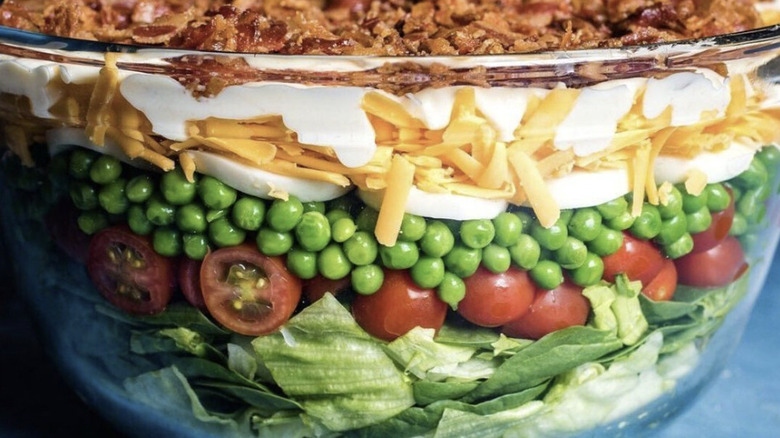Ree Drummond's Tip For A Perfectly Balanced Salad
Even though Ree Drummond lives on a cattle ranch with her cowboy hubby Marlboro Man, she's not your typical cowgirl. Drummond spent her college years as a vegetarian, and while she's since given up that lifestyle, she still loves veggie-forward recipes. With six cookbooks to her name, she has a slew of vegetable-friendly recipes like zucchini lasagna, but her salads really steal the show. Some people may see salads as a drab side dish consisting of mostly lettuce, Drummond's colorful salad recipes are packed with all sorts of veggies and even multiple kinds of protein.
When it comes to making a salad, balance is key to ensure every bite is delicious. Drummond's best tip is to use a lettuce (or lettuces) that can hold up to the ingredients and dressing. Her layered salad recipe uses both iceberg lettuce and baby spinach, with iceberg doing much of the heavy lifting. Drummond says she likes iceberg "partly because it's really, really sturdy, and it makes a good foundation for the rest of the ingredients." The salad is topped with tomatoes, hard boiled eggs, bacon, cheese, and peas, before being smothered in a sweet, creamy, dressing.
What's so great about a layered salad?
Layered salads are just one type of simple salad everyone should know how to make. If you've never made one, a layered salad is simply a salad where the ingredients are layered atop one another, instead of tossed together. Layered salads are traditionally served in trifle or clear, deep bowls, so everyone can see the layers. It's a great salad to take on the go or use at picnics since the bottom layers won't get soggy. If you want to prepare one before a potluck, you can chop all the vegetables and layer them into the bowl beforehand, then add the dressing right before you're ready to serve.
If you're trying to avoid a soggy mess, layered salad is the way to go. The lettuce, which is typically the first thing to go mushy, is protected by all the other layers, ensuring you still have a crisp bite. Both iceberg and romaine lettuce make good options for the base layer since both types of lettuce have a stronger structure and heftier leaves that can stand up to toppings and dressing. If you want to add some more nutritional value, lettuces like spinach and kale can be mixed in for some color, flavor, and of course, health benefits.

